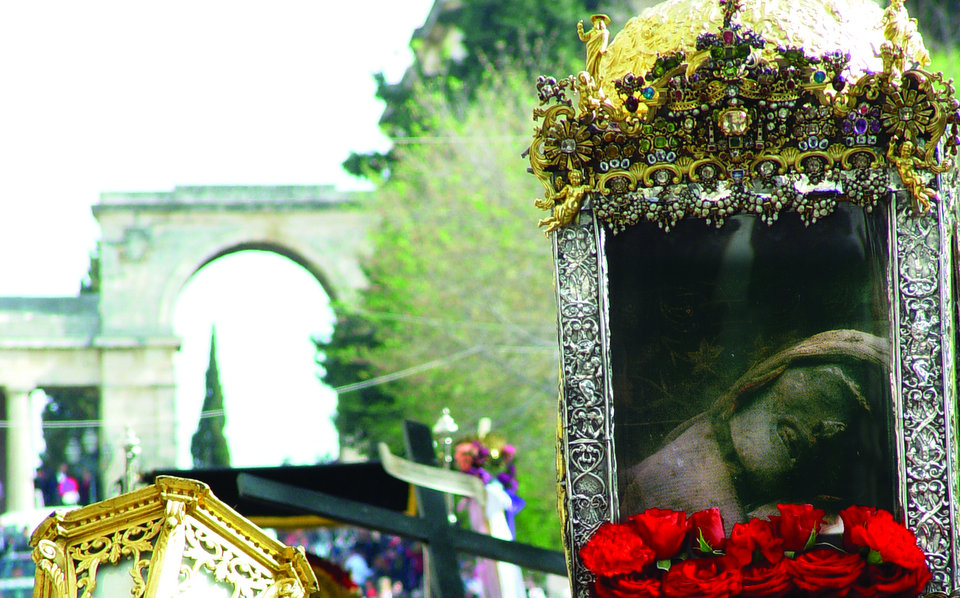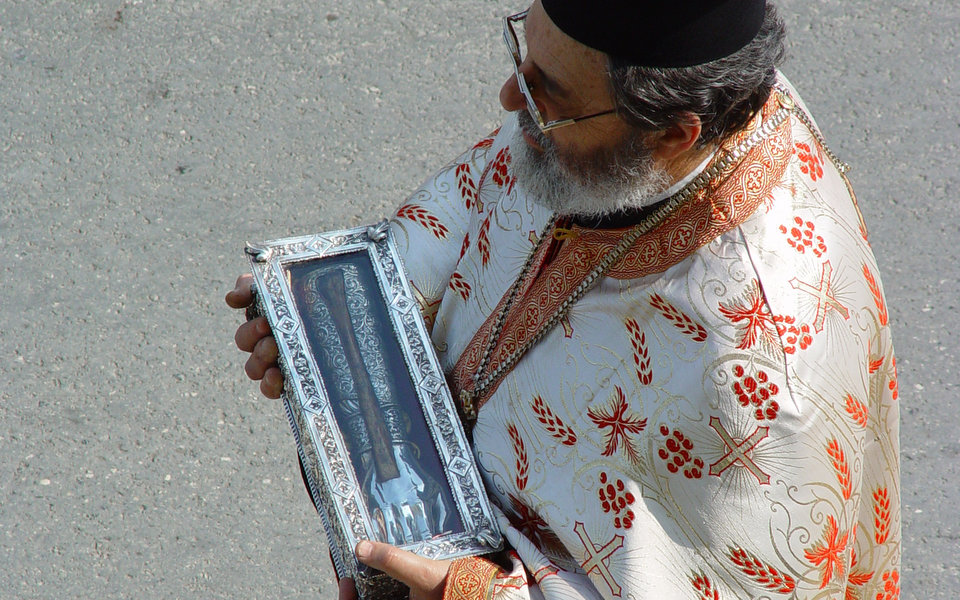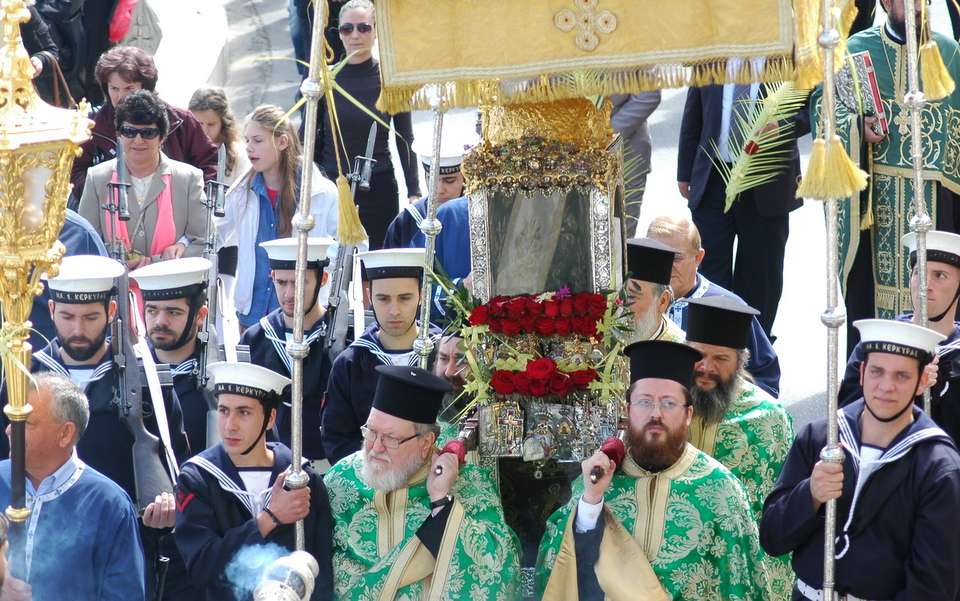


While Saints Jason and Sosipatros, disciples of Saint Paul, first taught Christianity on the island as early as the 1st century, it was not until four or five centuries later that people in outlying areas were converted. But even then, difficult living conditions did not leave much room for them to assimilate Christian dogmas. When they learned of the appearance of Saint Spiridon on the island, and of the miracles he had worked, they started to visit town to worship him and leave small dedications. Outside the protection of the town walls, they suffered raids and conquests, and their hardships made them feel helpless. Only one force stood above all others, a force which represented their own restricted powers, a force which could know and understand them and thus could defend and protect them. Their Saint.
Local faith in Saint Spiridon incorporates the belief that he is a holy man who really lives in a church in Corfu Town near the people, and he can see them, can feel their pain, and come to their aid. He could drive away the Turks, save them from cholera, and bring them grain to eat, and so today the people offer him gifts of decorated slippers, that he may walk with them, invisible but all-powerful, their protector.
If in the 15th century he was a Cypriot, today he is a Corfiot, the Saint of the Corfiots. The peasants' daily prayers to him when the Venetian overlords snatched their bread, when the Turks and the pirates took their lives, created an intimate relationship like that of a child and father. They say: 'We have Spiro to look out for us, and we fear nothing.' Thus a Corfiot is permitted to blaspheme in the name of the Saint, while a stranger may only pay homage to him.
Saint Spiridon was born in Tremithous in Cyprus in 270 AD. Son of a poor family, he had no education and earned his living as a shepherd. After the death of his beloved wife, he dedicated himself to the church and eventually rose to be Bishop of Tremithous. He participated with distinction in the Council of Nicaea in 325, and during the Maximilian persecutions he was arrested and exiled. He lived and died in Cyprus, working miracles throughout his life. When the Saracens took the island, the Cypriots opened his grave in order to remove his sacred bones to Constantinople. They found that his body had remained intact, while from the grave emanated a scent of basil, true signs of the sainthood he had shown during his lifetime. When Constantinople fell in 1453, a Corfiot elder, Georgios Kalohairetis, brought him to Corfu, where his three children acquired the remains of the Saint as an heirloom. The sacred remains then passed, as the dowry of his daughter Asimina, into the possession of the Voulgaris family, who placed them in their own private church. The Saint was transferred to his present church when, during the fortification of the town, the original church was demolished.
The Saint of the Corfiots
Processions: Flowing river of christianity through the city streets
Easter: Easter in Corfu is devout, splendid, special. That is why it is unique.